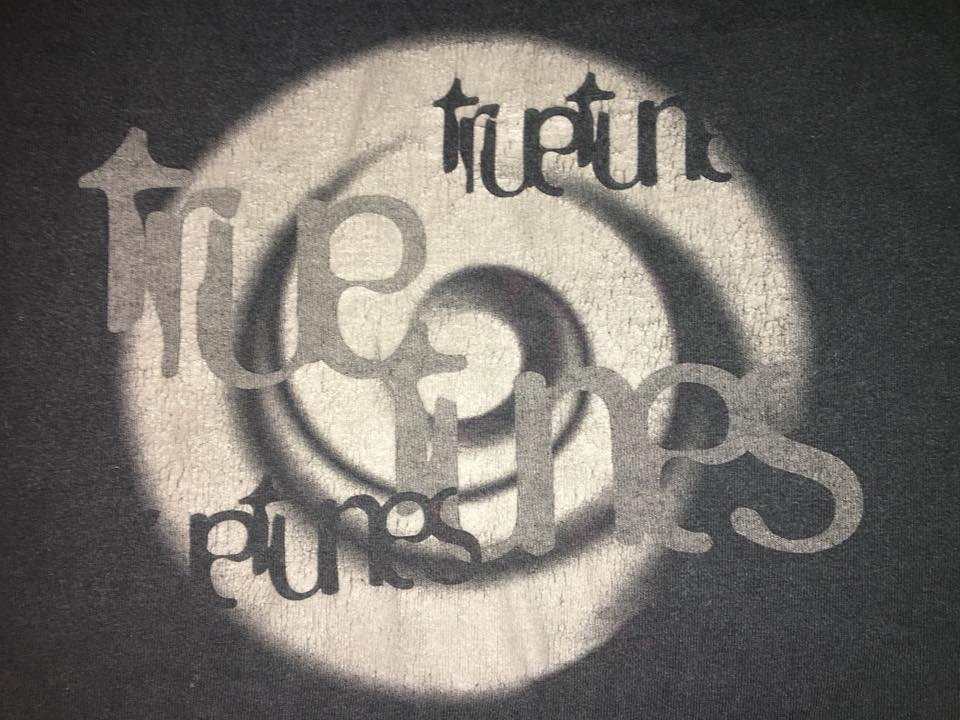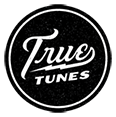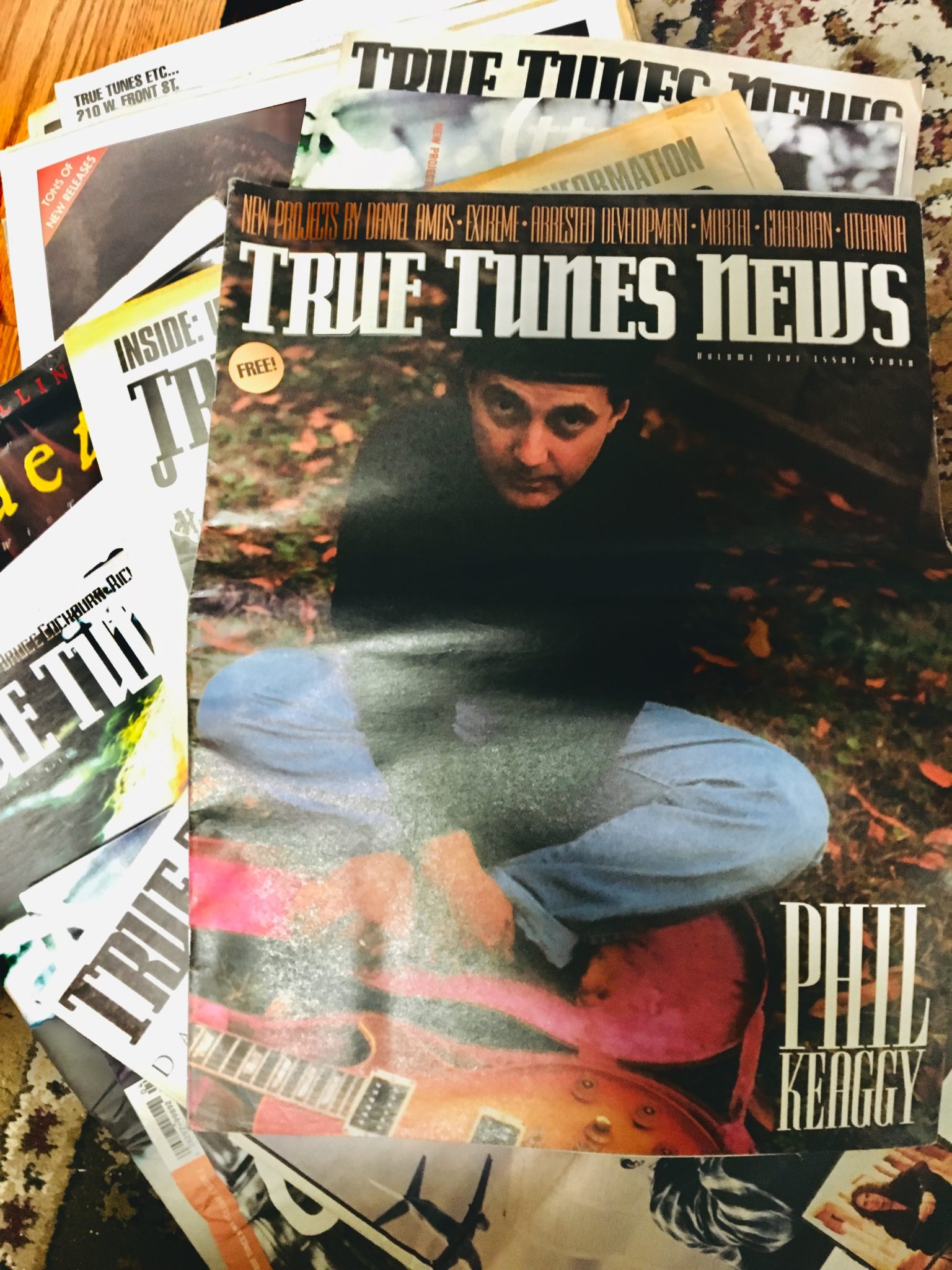
About True Tunes
True Tunes is an ongoing, re-booted, conversation about music, film, books, and other cultural expressions, that resonate on both creative and spiritual levels. It is a celebration of the good, the true, and the beautiful that began back in 1989, was interrupted for a time, and is now back online in a completely new, fresh way. Please take a moment to join the email list, as our ability to coalesce this community around this conversation is absolutely critical to the viability of this brand new venture. We’re not charging anything for this site, and we no longer have a mail-order company to generate funds. Our only currency is your attention. But make no mistake – your attention is valuable. When you take time to read these articles, and even forward them to your friends or post them to your social networks, you help us help the artists we believe deserve to have a voice. You might also consider clicking on the Spotify playlist and listening to some music while you read.
From Whence We Came…
I’m not sure how much I really comprehended when I read Francis Schaeffer’s Art and the Bible the first time. I think I was twelve years old. But his words worked on me even if they were a bit over my head. The idea that God obviously loved beauty, and that technical excellence mattered, and that critique was valuable, and that it really came down to the good, the true, and the beautiful… those things rung me like a bell.
And at some point around that time, as I voraciously read any music magazine I could find that had anything to do with this mysterious and frustrating intersection between legitimate modern music and well-reasoned faith, (it was a short list,) I came upon an interview with T-Bone Burnett in which he said several things that rang that same bell.
“I have to believe Christianity is true because it has survived 2,000 years of Christians.”
“I’m not stupid enough to want to be famous.”
And the real kicker… “If Jesus is the Light of the World, there are two kinds of songs you can write. You can write songs about the light, or you can write songs about what you can see from the light. That’s what I try to do.”
Wow. I had been unable to put my finger on exactly what it was about most religious music that left me less than inspired. I was struggling through a difficult childhood and clinging to a frayed faith. Shiny, happy, Jesus songs didn’t resonate with me most of the time. They didn’t feel anchored in the real world. And as a young, aspiring songwriter myself, and a fan of painters like Vincent Van Gogh, I was struggling to find a context for my faith in art. Burnett summed it up perfectly. He knocked over the walls that I was just starting to perceive were taking shape around me.
And then there was the Cornerstone Festival. When I saw The 77s play at Cornerstone ’84 everything shifted again. There was a world of music that dared to explore the creative and spiritual edges, and it was tragically obscure as a result. It didn’t need to be called “Christian Music.” This was much bigger than that. The 77s were joined on this beautiful, strange island by artists like Mark Heard, The Call, Steve Taylor, Daniel Amos, Vector, Adam Again, Larry Norman, The Choir, and many more. And then there were some solo artists and bands that were coming from a more blatantly Gospel perspective, but still managed to make music worth listening to. The whole thing made me dizzy. I had found my people; my calling. I would turn fourteen the following week, but I already knew what I wanted to spend my life doing. This was a circus I was going to run away with.
Then I went home and suffered a kind of culture shock no kid should have to endure. On one side there was MTV and Top 40 radio playing some of the dumbest, most vapid music imaginable. On the other was a growing cadre of mainstream “Contemporary Christian Music” artists – many of whom seemed perfectly content to act as a sort of “safe alternative” to “real music.” No. This would not do.
I remember that summer spending countless hours listening to the new soundtrack of my life, writing to artists at the PO Boxes on their records, and calling in to the one late-night rock and alternative show on a Christian station that dared to play the good stuff. I wrote out my manifesto that summer. It was a sort of vision document – a plan to launch a record store, concert venue, magazine, mail-order catalog, and radio station – all the stuff needed to create a proper scene – all centered on this music I had discovered. I started writing my own music, too. My buddy Rob and I learned how to play Steve Taylor and Altar Boys songs in his basement. Someday, we dreamed, we would open for the greats.
I brainstormed about 10,000 names for this new cabal I was creating. Pages and pages of names and logos filled my spiral notebook. Most of them looked and sounded more like band names than business names. But when I grabbed that copy of Art and the Bible and started flipping through it I wrote out some ideas inspired by its pages. “The Good, The True, and The Beautiful” would have been cool – with its Clint Eastwood inspired Spaghetti Western logo. But there was just no way to make the word “Beautiful” look or sound very rock and roll. “Good Tunes” was too generic. But when I got to “True Tunes” that bell rang again. And again. It was right there on the page. I’d have gotten it as a tattoo if I could have figured out how. I was THAT sure about it. This little world I was going to create would be called True Tunes. I spent the rest of the summer – my last month before High School, working on logos. They were awesome.
The following year I won a ticket to Cornerstone ’85 from that same radio station. I found a college youth group from Wheaton that was going and somehow talked my parents into letting me go with them. I hitched a ride with their ringleader, Matt, to pick up my ticket from the radio station. On the ride he learned just how passionate I was about this music, and got an earful about my manifesto. It turned out that he was the music buyer for a Catholic bookstore in Wheaton and was planning to go off to college the following year. He offered to recommend me for his job when the time came. He did just that and in July of 1986, just after I turned 16, I got my foot in the door and never looked back. I was the music buyer (and general grunt) for Wheaton Religious Gift Shoppe. I promised the owner that I would double his music sales and I did. I turned that little corner of the store into a full-blown experience. We had the best selection of hard to find music, and the most “generous” definition of what qualified something as “Christian” in the country.
We started to get phone calls, and mail orders, from around the country – and even occasionally overseas. The owner saw how much time I spent answering people’s questions about music on the phone and suggested I just write down my comments and recommendations and then fax them out once a week. That’s how the magazine was born. Wheaton Religious had a full mail order business so I had already learned everything about picking and shipping. Things evolved quickly.
Just before I graduated from High School I pitched the owner of Wheaton Religious on the idea of spinning the music department off into its own business. I showed him the name I had been saving since 1984, and the logo. I had an 80-page business plan that I had vetted with several record labels and distributors. It would cost us about $100,000 to launch. Much to my surprise and delight, Phil Taschetta embraced the idea and agreed to back my vision. We immediately branded the music corner of the store True Tunes and began looking for a new location while we laid the groundwork. I found a few like-minded compatriots to join in. Without people like Chris Langill, Paul Scott, Weezy B, and so many others there is no way that little boat would have ever floated.
A local kid named Greg Sylvester used to hang out at the shop all the time. He worked at a local print shop doing rudimentary graphic work. He helped us scan things and mock them up. Then he took a desktop publishing class at the local community college and created the first full issue of True News as his class project. Michael Knott, front man of one of our favorite bands (LSU) and founder of Blonde Vinyl Records asked if he could buy an ad. We’d never even considered that! Greg got better and better as a designer, and I got better as a writer and editor and found other people to help. The first newsprint issue, with David Mullen and The Alarm on the cover, made its debut at Cornerstone ’89. We gave them away free, but people had to sign up with their mailing address in order to have a copy. We came home with close to 10,000 “subscribers.” Boom! Just like that, True Tunes was a real thing.
The store opened on June 10th, 1989 in a house on Willow Street in Wheaton, just a few blocks away from Wheaton Religious. We outgrew that space immediately and moved back up to Front Street, just a few doors down from Wheaton Religious. A few years later when the upstairs tenants moved out we took over that floor and put a concert venue in. Upstairs at True Tunes hosted over 500 sets of music in just over 2 years of business. The magazine peaked at somewhere around a 75,000 copy print run and was shipped to most US states and several foreign countries. We focused on independent music, mainstream music with a spiritual perspective, and the handful of things from the Christian market that were worth listening to. By 1994, ten years after having written that manifesto, we had accomplished everything on the list other than launching a radio station. A couple years later we actually launched TrueTunesRadio.com – the first streaming radio station for our kind of music – but that’s another story.
I got a letter one day from Ramona in New York City. She was a copy editor for the New York Post. She loved the spirit of my writing, but said I could use some, er, “coaching.” For the next couple of years Ramona Garnes became my personal writing instructor. I faxed every article, record review, interview, and editorial to her to proof. She then got on the phone with me and walked me through the changes she made. She didn’t just fix the mistakes, she taught me how to become a real writer.
In 1996 True Tunes was acquired by a company that planned to expand it considerably. Instead they closed everything and tried to launch TrueTunes.com. They eventually sold the company to a group from Texas who did a great job with the website and the streaming radio thing, and launched an indie record label called True Tunes Records. But before long the wheels were falling off and I was let go. The music that True Tunes had helped to popularize – and had once been one of the only places folks could find – was suddenly available everywhere. On one level we had done our jobs. Some of our bands, like Sixpence, POD, and Switchfoot, were selling millions. In a way, though, we had worked ourselves out of a job. The True Tunes business model depended on ad sales and mail order sales. When several labels failed to pay their ad bills, and a few thousand people found that they could suddenly find the music they wanted in other places (like the local Bible bookstore, Best Buy, or Amazon) the floor fell out from under True Tunes. A model for monetizing online content had not quite evolved yet and everything sunk.
I went to work for the Cornerstone Festival for a few years, and launched a new company called Gyroscope that became a catchall for my various writing, production, and consulting work. In 2011 we moved to Nashville and I took a Music Publishing job at a Big Time Music Company – where I learned a ton about the inner workings of the industry. I continued to write about music for various magazines, and a new blog called ThinkChristian.net that had a really good way of looking at things. (You’ll notice a lot of the articles and reviews here point to things I originally wrote for them over the last several years, actually.) We occasionally hosted concerts in our back yard in East Nashville. I even had Phil Keaggy offer to play at the launch party for my book, Jesus Bread and Chocolate. Basically, the instincts and impulses that led to the creation of True Tunes have never left me. They just happened under other names.
And then one of the folks involved with the final iteration of True Tunes bumped into me at a concert in town and asked me if I’d like to have the TrueTunes.com domain back. He’d been sitting on it for years. YES! I said, thankfully. He graciously gifted it back to me and now, three decades after True Tunes first officially opened, this little digital version is back online.
As it was the first time, this is not just about me, though. I hope to enlist the contributions of many great voices. And as committed as we will be to the great music of our tribe’s roots, we are determined to introduce you all to the best music being made right now by young artists – artists that have come up in an era unconstrained by the artifice of labels like “Christian” and “secular.” Yes, we will highlight some of the best music from the archives, but this is no time capsule. This is about RIGHT NOW.
And here’s the thing… When we started True Tunes a big part of our mission was to overcome labels and stigmas. We pushed against the supposed “sacred / secular” divide at times, but looking back I now see that we contributed to it as well. Now that the walls have truly crumbled, and the industry that propped up terms like “Christian” for its marketing cache is a shadow of what it once was, we’re going to simply talk about music and art that moves us.
So sign up. And when you get the new articles – read them. Forward them. Click on the links and listen. When you find an artist you love SUPPORT THEM. Buy their vinyl. Support their Kickstarter campaigns. Go see them when they play in your town. Maybe book them to play in your home!
And who knows… if we can gather enough of the old tribe, maybe we can all get together somewhere, bring some bands, and have a party!
-JJT

